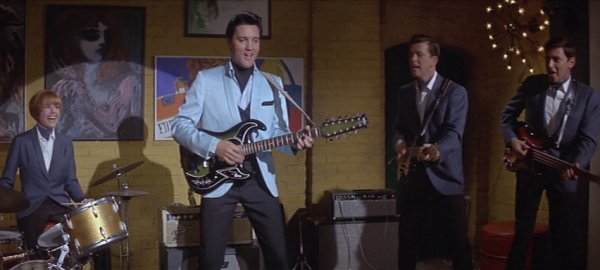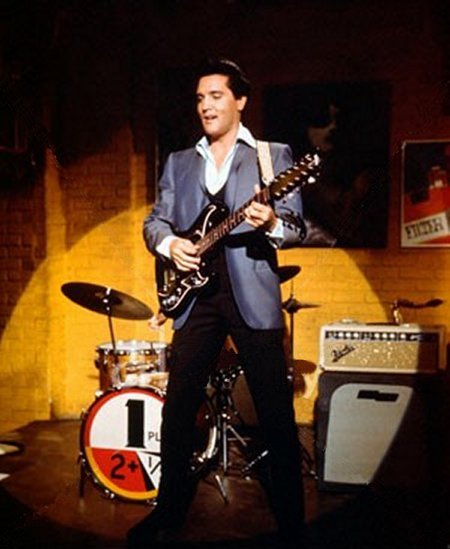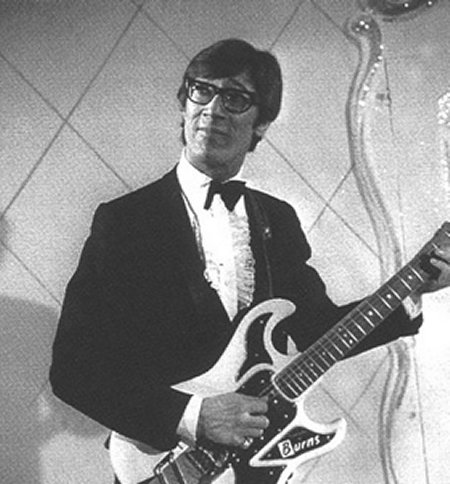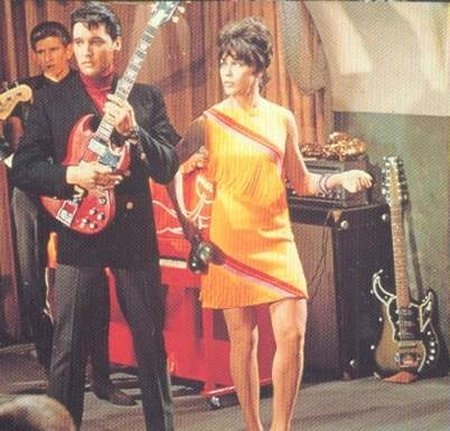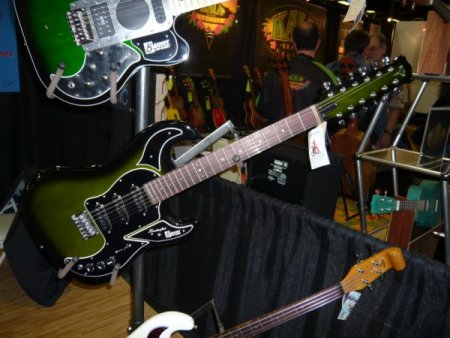 |
Elvis' 1964 Burns Double Six
In the first musical scene of the 1966 release of MGM's Spinout, Elvis is pictured performing with a 1964 "natty green" sunburst Burns Double Six (12-String) guitar.
The guitar was made by Ormston Burns Ltd., a company started in 1960 by James Ormston Burns. Burns became involved in making guitars following World War II and in the late '50s was part of Burns-Weill, making some of the earliest production guitars in England. With his own company he began selling guitars branded "Burns London," which were considered well designed and manufactured.* The Double Six model was introduced by Burns in 1964.
The Double Six was basically a 12-string version of the Hank Marvin guitar, also introduced in '64 as a tribute to the English guitarist who fronted the Shadows. They featured an offset double-cutaway solid alder body, sycamore maple neck with rosewood fretboard, a "split" three-piece laminated pickguard assembly (tortoise on the Marvin, black on the Double Six). The Marvin had three Rez-o-Matik single-coil pickups mounted at an angle while the Double Six had three slanted Tri-Sonic pickups with three-way select, one volume, and two tones. While the Marvin features a vibrato tailpiece, the bridge on the Double Six was a simple adjustable bar-type with a covered stop tailpiece. The Marvin only came in Olympic white and the Double Six was offered in natty green or red sunbursts.*
By 1965 Burns London was deeply in debt to suppliers and creditors and in September was bought by the Baldwin Piano and Organ Company of Cincinnati, who had previously failed to CBS on a bid to buy Fender. Most of Burns' guitars ended up in the Baldwin line and the plan was that Burns would continue to manufacture guitars in London and ship them to the U.S., branded as Baldwin guitars. Reportedly there were a few early models from '65 that had both names on them. Other than the new name, the '65 Burns line initially continued intact as the Baldwin line but ceased by 1970.*
Though possibly used then cut, Elvis' Double Six can be seen in the final scene from his following movie, the 1967 release of Easy Come, Easy Go.
In the '70s and '80s there were two major attempts to revive the Burns name but neither enjoyed any lasting success. The latest venture, starting in the 90's, is regarded as a case of third time luck though they attribute the favorable response received by BURNS LONDON to superlative product quality and equivalent performance at making Burns instruments available that successfully continue the fine legacy of their early classics.**
Today, Elvis' 1964 Burns Double Six can regularly be seen on display as part of his collection at Graceland. This page added August 15, 2010 is part of the sections The Guitars of Spinout and The Movie Guitars of Elvis Presley.
*according to Baldwin Guitars and Amplifiers - Quest For Guitar Fortunes
by Steve Krueger and Michael Wright
|
|
All photos on this page unless otherwise indicated are the property of the designated persons or company, any unauthorized use or reproduction is prohibited. |
